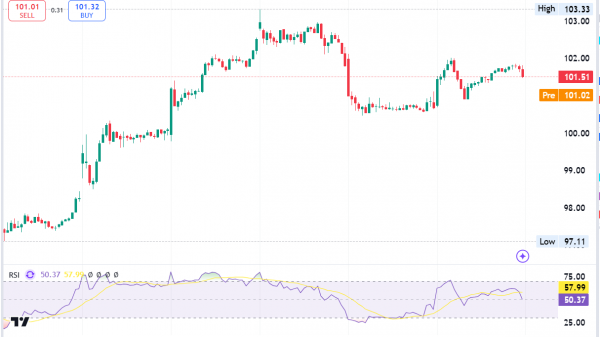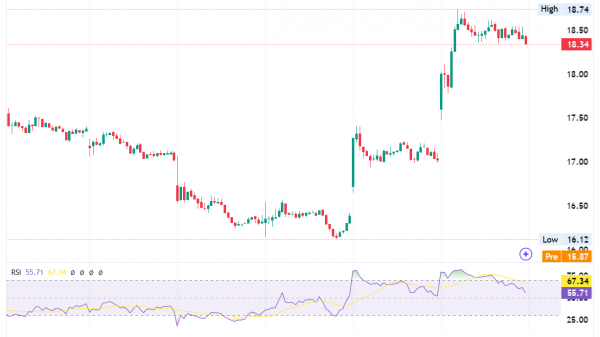What Is Position Trading: All Crucial Information
Position trading is a common trading strategy where investors hold their position for a long-term period, often months or years, based on comprehensive fundamental and technical analysis. The main goal is to profit from the anticipated future price movements of the traded security.
It is important to understand the difference between passive investors and position traders.
Passive investors and position traders represent two distinct approaches to engaging with financial markets. While both aim to make a profit from their investments, their methodologies, time horizons, and involvement levels differ substantially.
Let’s delve into these distinctions.
1. Investment philosophy:
Passive investors: Passive investing is based on the belief that over the long run, markets tend to rise, and it’s challenging, if not impossible, for individual investors or even professionals to consistently outperform the market.
Passive investors, therefore, opt to invest in a broad spectrum of the market, often through index funds or exchange-traded funds (ETFs), which mirror the performance of a specific market index, such as the S&P 500.
Position traders: Position trading, on the other hand, is an active investment strategy. Position traders make decisions based on detailed fundamental and technical analysis, aiming to capitalize on anticipated price movements over an extended period.
Their trades might last for weeks, months, or even years, but the key distinction is that they actively seek out and decide on these positions based on their analyses.
Passive traders and position traders (part two)
2. Time horizon:
Passive investors: These investors typically have a long-term horizon. They buy and hold their investments for years, if not decades, focusing on the long-term growth potential and usually disregarding short-term market fluctuations.
Position traders: Position traders operate with a medium to long-term horizon. While not as short-term as day traders or swing traders, they don’t necessarily hold onto positions for as long as passive investors might. Their goal is to enter and exit positions based on anticipated price movements within their expected time frame.
3. Level of involvement and costs:
Passive investors: One of the hallmarks of passive investing is its hands-off approach. Once investments are made in index funds or ETFs, there’s minimal need to monitor or adjust the portfolio frequently. This approach also often results in lower fees and transaction costs, as there’s less trading involved.
Position traders: Being an active strategy, position trading demands a higher level of involvement. Traders need to conduct regular analyses, monitor markets, and make decisions on when to adjust or exit their positions. This increased activity can result in higher transaction costs and fees.
Position trading is a strategic approach in the financial markets where traders aim to profit from the broad movements of assets by holding positions for extended periods, often weeks, months, or even years. Like every trading strategy, position trading comes with its own set of advantages and disadvantages.
The short position in trading
It is also desirable to discuss the role of a short position in trading and a long position in trading.
In trading and investing, the terms “short” and “long” position refer to the direction a trader expects an asset’s price to move and subsequently, the type of trade they decide to execute.
When a trader takes a long position, they are buying an asset with the expectation that its price will rise in the future.
A short position involves selling a borrowed asset with the expectation that its price will decrease, allowing the trader to buy it back later at a lower price.
Advantages and disadvantages of position trading
Now, let’s focus on the pros and cons of position trading.
Advantages
1. Less time-consuming:
Position trading can be less time-consuming compared to day trading or swing trading because it doesn’t require traders to constantly monitor the markets and make rapid decisions. Once a position is opened based on solid fundamental and technical analysis, traders can hold onto the asset for an extended period.
2. Avoidance of short-term noise:
Position trading helps investors avoid the stress and risk associated with short-term market volatility and noise. Since position traders hold assets for a longer duration, minor price fluctuations and market noise don’t typically affect their trading strategy.
3. Potential for significant profits:
Position traders have the opportunity to earn substantial profits by capturing large price movements. This potential is often greater than what short-term traders can achieve as they aim to profit from smaller price changes.
4. Benefiting from economic cycles:
Position traders often base their decisions on long-term economic and business cycles. Successfully anticipating these cycles can lead to profitable trading opportunities, as assets tend to move in recognizable trends over the long term.
5. Reduced transaction costs:
Since position traders execute fewer trades compared to short-term traders, they often incur lower transaction costs. This aspect can positively impact the overall profitability of their trading activities.
Disadvantages of position trading
In spite of all the advantages, we can’t forget about the disadvantages traders should take into consideration when it comes to position trading.
1. Larger capital requirement:
Position trading often requires a substantial initial capital outlay. The need to withstand short- to medium-term price fluctuations without exiting the position necessitates a robust financial buffer.
2. Opportunity costs:
Holding positions for long durations can result in opportunity costs. Traders may miss out on other potentially profitable trading opportunities because their capital is tied up in long-term positions.
3. Exposure to unexpected events:
Position traders are exposed to risks associated with unexpected market events or global economic shifts that can adversely affect their open positions. Examples include geopolitical events, natural disasters, or sudden economic downturns.
4. Need for comprehensive analysis:
Position trading demands a profound understanding of both technical and fundamental analysis to make informed trading decisions. The need for extensive research and analysis can be a barrier for some traders.
5. Risk of larger losses:
While position trading offers the chance for significant profits, the risk of substantial losses is also present. Long-term holding without appropriate risk management can lead to significant capital erosion if the market moves unfavourably.
To sum up, position trading offers the appeal of potential significant profits by capturing large price movements and avoiding daily market noise. The strategy also tends to incur lower transaction costs due to fewer trades.
However, the risks include exposure to unexpected events, the necessity of more substantial capital, and the possibility of missing out on other trading opportunities. A successful position trader must weigh these pros and cons carefully, employing robust risk management strategies to safeguard their investments while seeking to capitalize on long-term market trends.
The post What Is Position Trading: All Crucial Information appeared first on FinanceBrokerage.


































